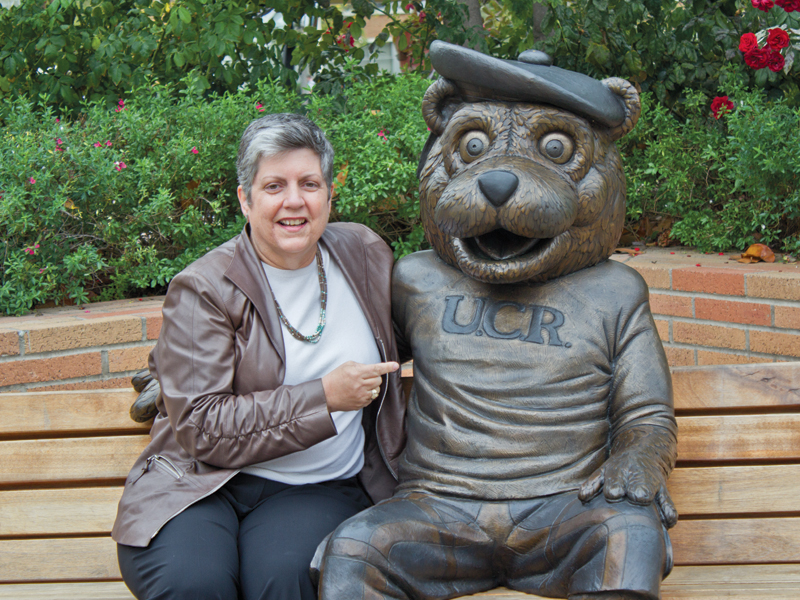
Mark Yudof, President of the University of California from 2008 to 2013, led the UC system through fighting times when budget deficits were apparent, but responded with countervailing measures. Although he entered the position with a plunging economy, his successfully implemented Project You Can and The Blue and Gold Opportunity plan have made a meritorious rebound for students of the University of California despite facing state funding cuts and personal unpopularity among students and legislators.
But strategy and planning are not the only ways to overcome financial and educational needs. Replacing former President Mark Yudof, the first female UC President, Janet Napolitano, has ambitious aims to put California’s higher education and economic equality back on the correct trajectory. Being an immigrant and coming from a foreign background, it was extremely hard to receive financial aid for private and out-of-state universities. The UC system provided financial aid for me as a legal citizen. I am extremely blessed for the aid I have received to continue onto higher education, and undocumented students should be given the same treatment.
Napolitano has not only made great headway with her initial fiscal policies toward international students, but has shown some urgency for undocumented students along with a postdoctoral fellowship program and graduate students, putting $15 million ($5 million each) toward financial assistance. The subsidy can help undocumented students to have less financial weight and therefore able to focus on their education. In light of Napolitano’s aid for undocumented students, she will be expanding a postdoctoral fellowship program and a more qualitative graduate student recruitment.
Napolitano is heading in the right direction, but some issues do raise concerns. Social and economic diversity is an important aspect in a thriving society; but is it enough to heighten UC’s potential for higher education? As an immigrant and a full-time student, I empathize with both the undocumented students as well as the students with legal status. I am a strong advocate of the DREAM Act introduced in 2001, which allows undocumented minors who have entered the U.S. at the age of 15 or younger, lived five years prior to the bill’s passage, achieved a G.E.D. or high school diploma, and are under the age of 30, to obtain conditional permanent residency of six years to fulfill a 2-year degree or two years of military service.
Adhering to the criteria of the DREAM Act, I unwaveringly support giving legal status to children who were brought to the United States by their parents. But why is Napolitano’s funding of $5 million for undocumented students her top priority in her first major speech as president of the University of California? In an interview with New America Media, Napolitano wants to “offset some of the financial burden caused by the fact that they can’t get federal aid or work study grants.” She stated that the mission is to educate Californians regardless of their legal status, and to support aspiring students while they pursue their passions.
Understandingly, by bridging the gap of economic inequality by making education affordable, advancement in our economy, intellect and overall well-being will be underway. Affordable education is Napolitano’s promise for the UC. This vision is the hallmark to greater social and economic diversity because affordability means that students from all backgrounds can have an opportunity at higher education. Higher education at a low and affordable tuition, in addition to a quota system that would extend the limitations for enrolling students, is a must so that more students can take their degrees to help contribute to a prosperous workforce for generations to come.
Napolitano promises to bring “big ideas” to the table, and I surely hope that she will deliver with conviction. In her effort to imbue the spirit of higher education throughout California, Napolitano has remarked that the “California dream is really the American dream on steroids.” This approach is a seamless paradigm of success for current and future students of the University of California.








